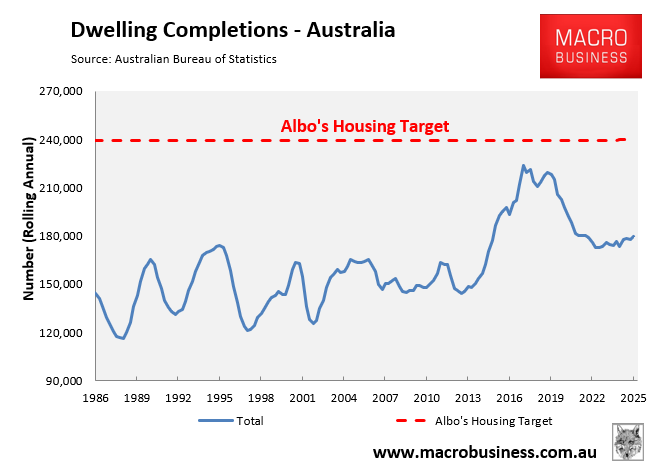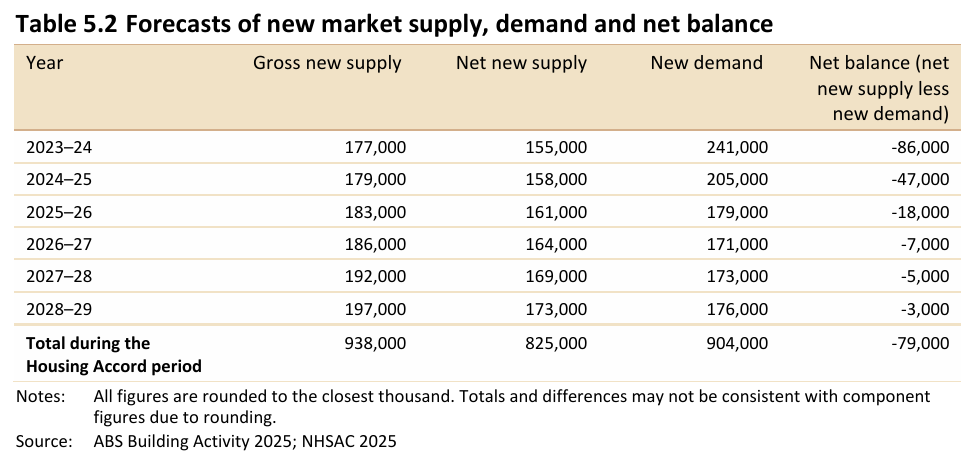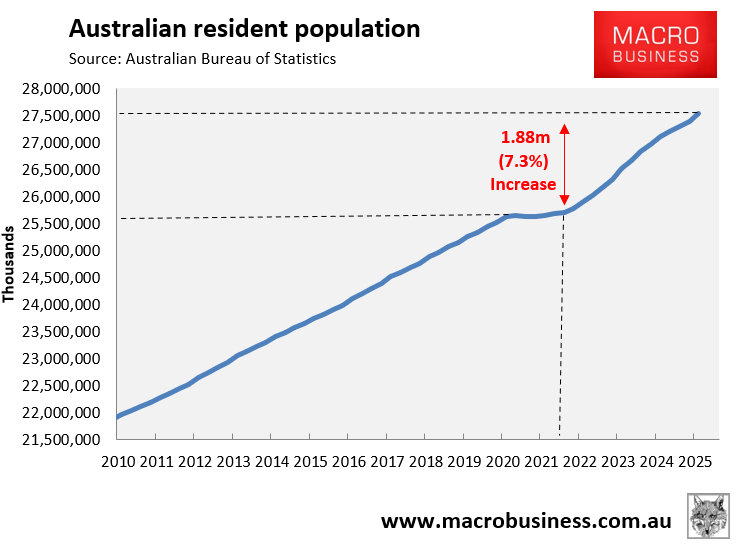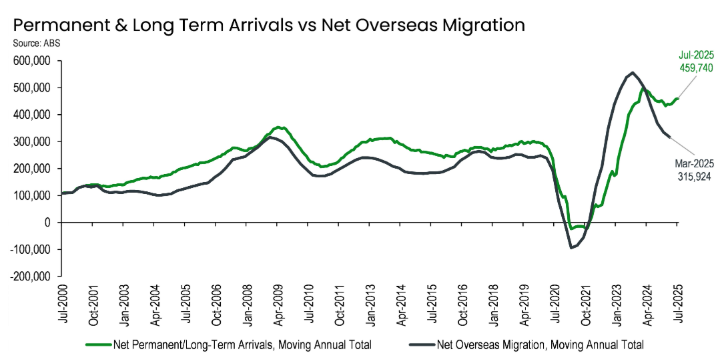The Albanese government’s housing target is proving to be one of the nation’s biggest policy shams.
The National Housing Accord set a target of building 1.2 million homes in the five years to 2028-29, which requires 240,000 homes to be built every year—a rate of construction never achieved before in the nation’s history.

Nobody believes that this level of construction is possible. Even the federal government’s own National Housing Supply and Affordability Council (NHSAC) forecast that only 938,000 dwellings would be completed nationally over the five-year National Housing Accord period, 262,000 below the 1.2 million target.

As a result, Australia’s cumulative housing shortage, which is already estimated to be between 200,000 and 300,000 dwellings, would worsen by 79,000 over the five-year Housing Accord period.
Last week, the Australian Bureau of Statistics (ABS) released the Q1 2025 population data, which showed that the nation’s resident population ballooned by 423,400 annually, driven by net overseas migration (NOM) of 316,000—higher than anything Australia experienced prior to the pandemic.
Indeed, Australia’s population grew by an astonishing 1.88 million (7.9%) between Q1 2021 and Q1 2025—equivalent to adding an Adelaide and Hobart to the nation’s population.

Commenting on the result, the Housing Industry Association (HIA) admitted that the “demand for housing continues to outpace supply”.
“The ongoing influx of overseas migrants has pushed Australia’s population beyond 27.5 million in the first quarter of the year”, said HIA Chief Economist, Tim Reardon.
“Australia took in a net inflow of 110,060 overseas migrants in the first quarter of the year, bringing the net inflow for the last 12 months to a total of 315,920”, added Mr Reardon.
“While this represents a continued moderation from earlier inflows, it is still well above the pre-pandemic decade average of less than 220,000″.
“Moreover, leading indicators have been suggesting that Australian population growth, on the back of overseas migration, is likely to remain elevated compared to historical averages”, Reardon said.

“The Australian government creates housing demand through immigration, while state and local governments are responsible for housing supply and the price of homes reflects their ability to work cooperatively”, Reardon said.
When even Australia’s homebuilding industry complains about the volume of migration, you know there is a problem.
The fact of the matter is that the nation’s housing shortage and rental crisis will never resolve so long as the federal government continues to import hundreds of thousands of people’s worth of new demand into the market every single year.
It is basic arithmetic: cut immigration significantly or the housing crisis will remain a permanent feature of Australia.

